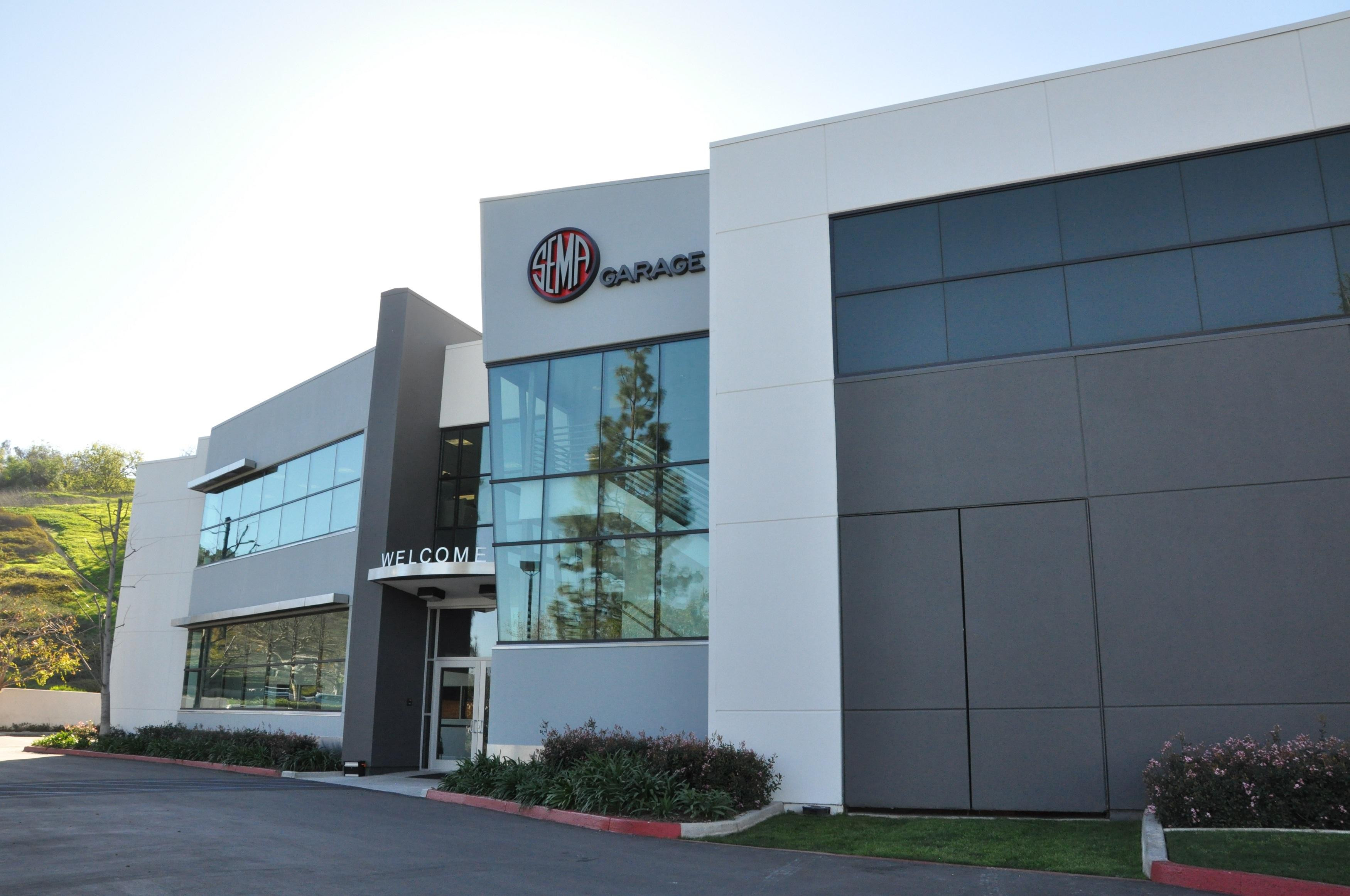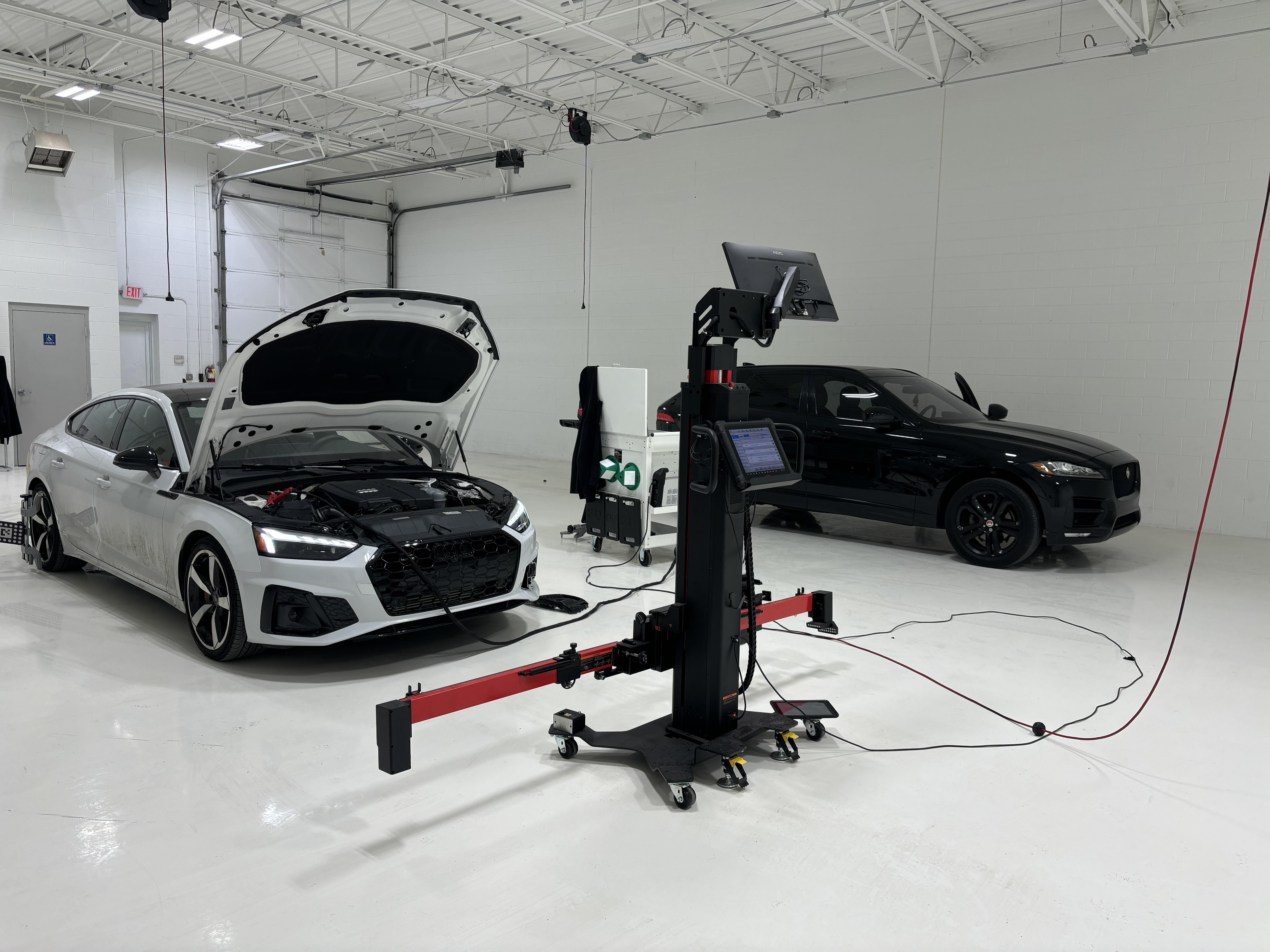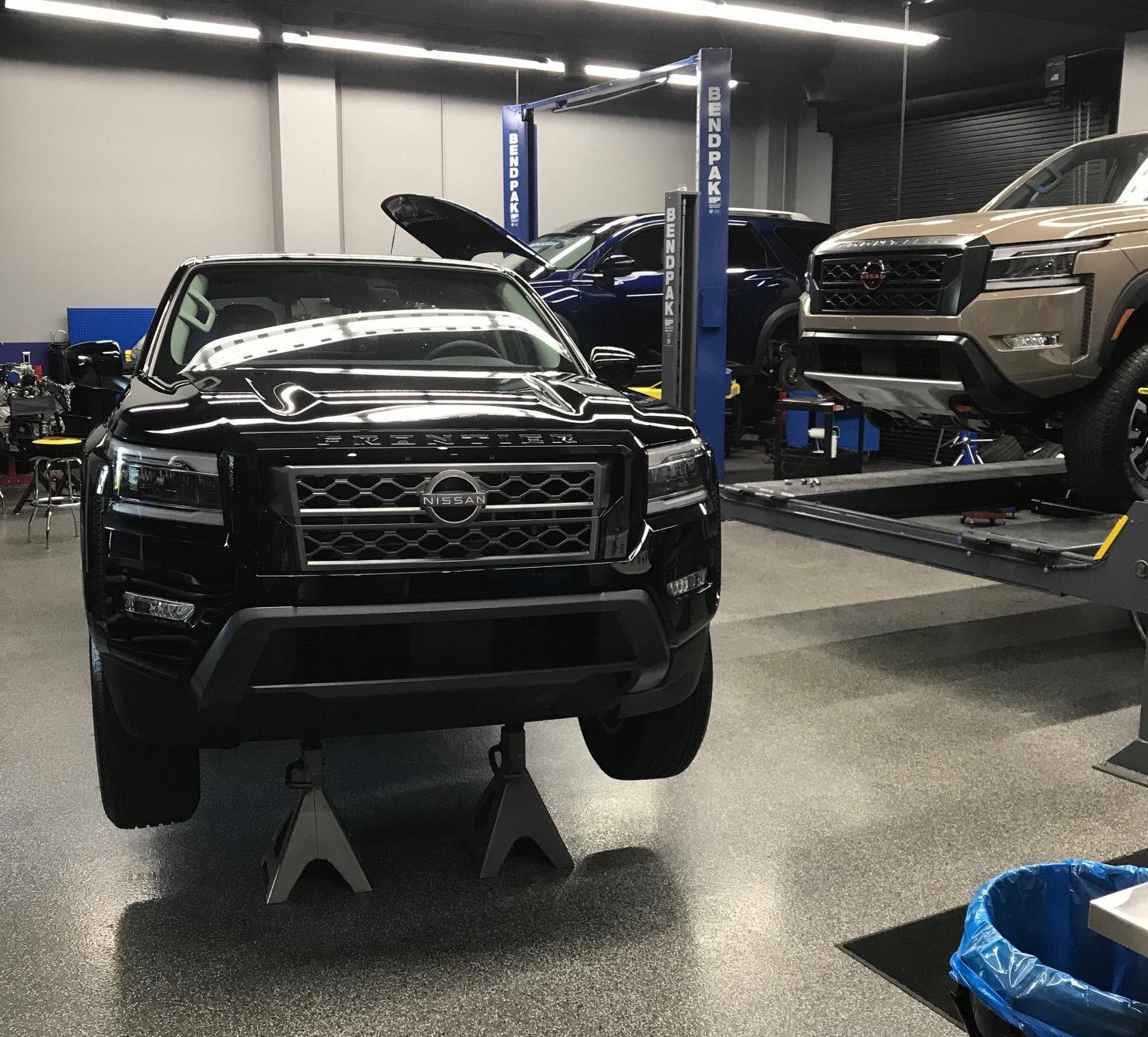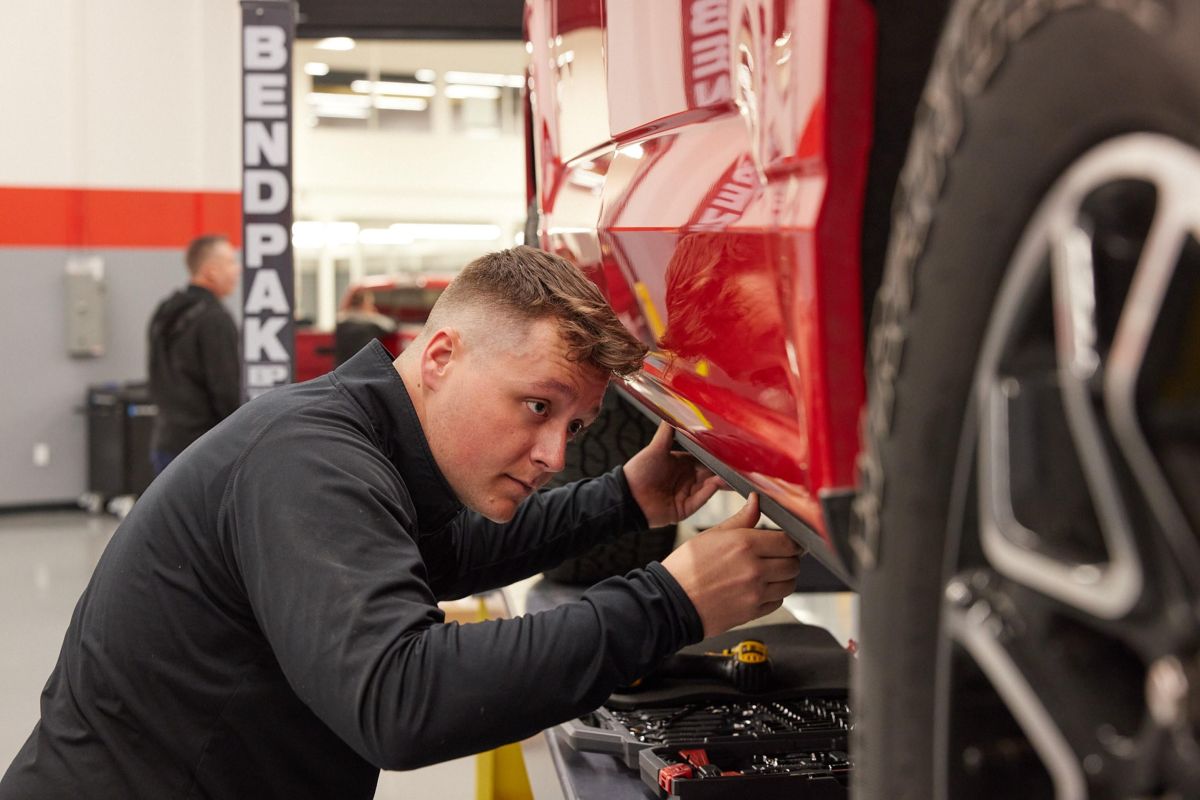“We cut a two-year process to four months," said Mike Spagnola, CEO of the Specialty Equipment Market Association (SEMA) about work at its SEMA Garage in Diamond Bar, CA.
The "process" is the one in which manufacturers’ products can get tested and certified by CARB, the California Air Resources Board, which monitors and improves air quality in the state.
He describes a previously extensive, expensive, complex -- and at times confusing -- testing process with “few labs doing the work.” And when “you did get the work done, it could take a year to get certification.”
 The Diamond Bar, CA, SEMA Garage.
The Diamond Bar, CA, SEMA Garage.
SEMA “worked with CARB to streamline paperwork,” then built a team to help manufacturers fill out those forms. Testing space at the garages host the research and development legwork.
The Diamond Bar facility is one of two such SEMA labs; the other is in Plymouth, MI.
California is big, ruthlessly regulatory, and a locus of car culture where people year-round "drive up the coast." In Michigan, they still make a lot of cars, and sweet stuff for them.
SEMA spent $25 million building the two sites over the last 10 years. Michigan’s facility is 45,000 square feet -- an acre of space and four times larger than California’s -- and includes an Advanced Driver Assistance System (ADAS) product development area.
Aftermarket R&D
“It’s for manufacturers to grow their business, making more things to sell and finding more people to sell them to,” Spagnola said.
SEMA includes some 7,000 member companies. An internal study it did last fall said specialty equipment adds about $337 billion to the U.S. economy, and bolsters 1.3 million jobs.
Developing products “before they hit the market” -- think outside developers working with Apple to craft accessories for coming laptops and smart phones -- “was the genesis of SEMA Garage,” Spagnola said.
It’s “research and product development,” he said, “helping our manufacturers get through compliance, and understand the effects of modifying a vehicle.” SEMA also works on industry legislation and provides data from garage research to members.
So, sites do "behind-the-scenes" work, preparing products for market, with two crucial efforts being CARB and ADAS work.
CARB has developed a rep for hardnosed regulatory moves, especially through the 1970s and '80s, when smog infused the California sky, darkening the California dreamin’, and air quality was a daily element of weather reports on local news.
It took flak for this but, based on results, seems to have stuck the landing -- at some cost.
 SEMA CEO Mike Spagnola.
SEMA CEO Mike Spagnola.
Whatever one’s view, it’s business reality here.
For CARB, "No" is a complete sentence. On the other hand, so is "Yes."
If makers can make it there, they can make it anywhere. Get a CARB nod in Cali and you’re good to go. It has OK’d both Garage sites for certification-level automotive exhaust emissions testing.
Spagnola added the EPA accepts CARB certification as the Golden State’s gold standard of emissions.
Only a dozen other U.S. sites, as of early this year, offer similar testing, according to SEMA.
Keeping Up With Technology
A decade ago, ADAS wasn’t even part of SEMA’s plan for the sites. Growing vehicle complexity prompted adding it, and SEMA put $1 million into the effort.
Its ADAS arena can test "stock" specifications and variables one day, fine-tune post-repair calibration the next. What are the effects on ADAS, for instance, of modifying vehicle height? What changes when fixing damage where system sensors sit?
Automotive technology changes rapidly, said SEMA Director of Vehicle Technology Luis Morales.
He tracks and responds to industry-wide shifts -- ADAS, zero-emission vehicles, overall equipment evolution, along with internal combustion engine work. A third of SEMA members make products for that ostensibly old-school platform, he said.
“Part of my job is to identify the challenges, see what’s changing, what you should be aware of, and how it will affect your specific product,” Morales said. People still “want to modify and personalize, but how they did it five years ago might not be how they do it five years from now.”
His portfolio also includes advocacy at the legislative level as new technology becomes normalized.
“The industry and the federal government are on a path to standardize features,” Morales noted. “Right now, some ADAS [elements] can be turned off. Once it becomes a federal standard,” that’s not so.
He cited blind spot detection and automatic braking as two ADAS elements likely soon to be law for new cars.
The Rise of ADAS Calibration
In May 2023, with Michigan’s ADAS space as in-development as the research it now hosts, Mark Gentile Jr. got an inside look.
“It was sort of a glorified tour,” Gentile said. “We didn’t perform any calibrations but wanted to see the tools.”
Spagnola said as SEMA built its ADAS space, it talked with body shops about their work “to put vehicles back into compliance … what do you need to calibrate?”
It found many shops weren’t calibrating at all. “They were replacing sensors but not recalibrating systems,” Gentile said. SEMA does some training on this, working with local body shop associations.
“One of the frustrations is that ADAS isn’t new,” Gentile said, “some forms have been around for a long time. But so many shop owners don’t put any weight on it.”
 Premier ADAS in Shelby Township, MI.
Premier ADAS in Shelby Township, MI.
He is part of Gentile’s Collision, a fourth-generation body shop founded by a great-grandfather in 1941. It has 16,000 square feet and 24 employees, and sees 100 cars a month.
The business includes a separate, 4,200-square-foot calibration facility, Premier ADAS, which Gentile runs, with work on 50 to 60 cars a month. Both facilities are in Shelby Township, MI.
Premier is licensed through Car ADAS Solutions in Salt Lake City, UT, giving it some competitive cachet in serving collision centers in metro Detroit.
The SEMA Garage visit, well, “it was like a playground in there. They’ve got two labs that are just immaculate [and] tools from countless manufacturers.”
Gentile said even if shops can’t get to the SEMA Garage -- work is mainly with manufacturers -- it “showcases the technical equipment, and puts the weight and importance on calibration, that it should be taken seriously.”
Gentile also covets the research data, and hits the SEMA Show “to look for new tools and technology.” But it’s not about being a gear nerd or tapping trends.
“I put it another way,” he says. “You want to fix cars correctly.”
Designing Products for Future Vehicles
In TV western town terms, SEMA Garages merge the general store and the blacksmith. They combine commercial entrepreneurial ego and effort, aspiration and achievement: people plan a product that might sell, but first, we work.
In some ways, “Product optimization doesn’t change much,” Morales remarked wryly. “A wheel’s a wheel. You change materials, maybe the aesthetics, but you’re not going to drastically alter it.”
Same time, there’s variety in ADAS. Different makers use different sensors, some go with cameras, and they don’t put them in the same place on cars. As a collision center, you remove and replace the bumper, and now you’re dealing with that sensor. And what if next year the carmaker moves the sensor itself?
Even on a wheel that hasn’t fundamentally changed in... ever, “now there are sensors on the wheel assembly.”
Via the Garage and tech transfer -- that Apple-like sharing of data so companies can come up with new stuff -- “members get a look at” new model year vehicles. Reverse engineering is also part of the mix “for sure,” Morales said.
The work pulls in SEMA members, vehicle manufacturers, state and federal agencies and lawmakers, and, down the line a bit, and especially on ADAS, the body shops.
Which doesn’t mean there won’t be “shifts in strategy and product development” by vehicle makers, such as Ford’s moves over the last year to decelerate production on EV batteries and its F-150 Lightning electric truck.
Developing New Products for Existing Vehicles
“SEMA is a trade organization,” Spagnola said, “so our goal is to help our members grow and prosper, to get through any sort of compliance that’s needed.”
About 500 of those members are developing products related to engine performance.
Other manufacturers can pay to use the testing facility, as Eugene Turkov did. Turkov is a lifelong car guy, whose family emigrated from Ukraine when he was 6.
 A Nissan Frontier is measured at the Diamond Bar SEMA Garage.
A Nissan Frontier is measured at the Diamond Bar SEMA Garage.
“My parents worked their way up the ladder,” he said, and “when it came to me driving, if the car broke,” he fixed it himself -- in the days well before YouTube.
There were many missteps -- replacing a power steering pump without a jack, crumpling the porcelain trying to change spark plugs -- but it’s how an aficionado is made.
Eventually YouTube caught up to Turkov. He started making car repair videos, and doing mobile auto repair focused on enthusiasts -- “people who care how the work is done.”
Enthusiast Auto Care is in Concord, CA, fixing Nissan and Infiniti models. Turkov has a specific focus -- for the enthusiast’s enthusiast, let’s say -- on the VQ37VHR engine, for which he makes, sells and installs a twin turbocharger and other products.
Concord body shop MakrMetalFab makes parts that go into the kit -- a kit for which in California, Turkov needed CARB certification to be street-legal.
Turkov tested his concept at SEMA Garage in Diamond Bar in summer 2022, and began selling his approved kit in spring 2023. The work involved engineering design, testing and simultaneous CARB submission.
Even after the product passed -- and not on the first try -- honing work continued.
“They give a lot of information and are genuinely there to help,” Turkov said.
Body Shops Benefit
Turkov is “looking long-term” at more new products that will also require CARB’s blessing. “I don’t see California phasing out smog checks any time soon,” he said.
Spagnola and Morales look to continue their work, as well. As long as there are innovation and improvements, parts makers will need a "playground" to try them out.
Spagnola grew up in Southern California. He recalls his opera singer mother rendering the National Anthem at Dodger Stadium, where the family had season tickets, and “bringing pasta to Tommy Lasorda” as a kid.
Like Turkov, he dates his love of cars to the first grade. Then he “spent my life in manufacturing and product development.”
He was a SEMA member, making and selling stuff for other car folk. He sold his last company in 2013, then came to the association to start the Garage work.
Morales said, “ADAS is essentially all the functions that make driving easier” -- and people want them.
Body shops will benefit from the work, particularly on ADAS and the research. “It’ll be key to their success.”















Paul Hughes